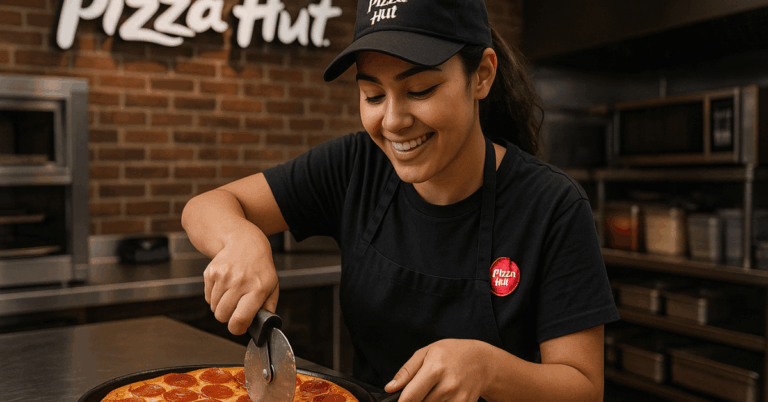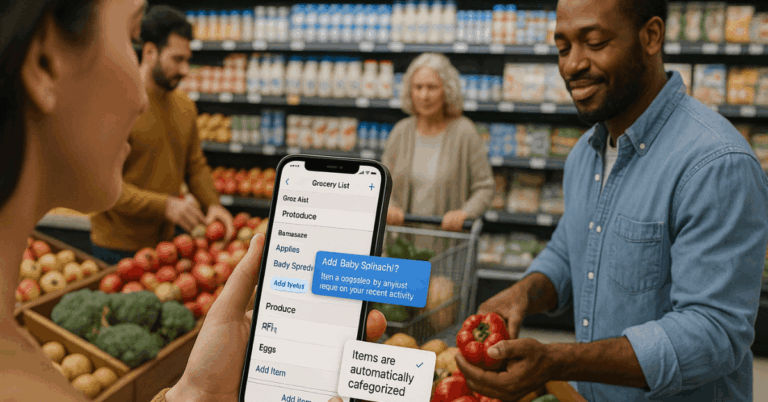In global quick-service hiring, timing, preparation, and clean documentation determine outcomes more than luck. Applicants who match availability to peak shifts, present a tidy resume, and respond fast after interviews move first in line for offers.
Since franchise operators handle most locations, processes look similar but timelines can vary by market and manager.
Aim to keep the focus keyword visible early: landing a Job at Burger King comes down to a crisp application, a short assessment where required, and a practical interview that gauges reliability and customer service.

Burger King Company Overview
Founded in 1953 as Insta-Burger King and renamed after a 1954 ownership change in Miami, Burger King operates one of the largest global hamburger chains by locations and revenue.
Menus extend beyond burgers to include breakfast items, chicken, fries, desserts, and beverages that accommodate varied regional tastes.
Franchised ownership drives most storefront growth worldwide, while standardized training and operating procedures keep service consistent. Strong entry-level pipelines mean thousands of candidates join each year across crew, shift coordination, and management tracks.
The Burger King Hiring Process
A few predictable stages repeat across geographies and franchise groups. Expect an online application, optional screening or assessments based on role, and an interview that tests customer focus and schedule fit.
Since restaurants run busy windows on evenings and weekends, clear availability and dependable transportation frequently tip decisions.
Documentation readiness matters as well, including government identification, proof of work authorization, and bank details for payroll once hired.
Job Application Process
Most candidates start on the official careers portal or submit details in person at participating restaurants. Online forms typically request contact information, preferred locations, right-to-work confirmation, work history, and shift availability.
Applications route to the hiring manager for the chosen store, who may contact you by phone, text, or email. Accurate availability, correct contact details, and a concise one-page resume raise the odds of a quick response.
During the online flow, roles appear by category, team member, shift coordinator, or management tracks, alongside store addresses. Selecting nearby restaurants reduces commute risk and signals reliability to managers evaluating attendance. Because many restaurants hire continuously, revisiting the portal or checking stores in adjacent neighborhoods can surface openings sooner.
Assessment Test
Some positions include brief assessments, most commonly numerical or verbal reasoning checks to confirm comfort with basic math and following written instructions. Numerical items can involve reading simple tables or totals; verbal items can ask for the most logical completion or best response to a scenario.
Higher-responsibility roles may include additional workplace-style questions about judgment and priorities. Since point-of-sale work touches cash handling, strengthening mental math with prices, change, and small percentage discounts helps.
Practicing quick table reads and short scenario decisions improves speed without sacrificing accuracy. Minor crew roles may skip formal testing, substituting a short in-person screening focused on schedule and attitude.
Interview Process
Hiring managers favor concise answers that demonstrate customer service, punctuality, and teamwork under pressure.
Typical Burger King interview questions include motivations, handling of unhappy guests, knowledge of the brand, and examples of reliable past work. Keep responses specific, name actions taken, and end with outcomes that show learning.
- “Why do you want to work here?”
- “What makes you a strong fit for this team?”
- “How would you handle a wrong order reported at the counter?”
- “What do you know about the company and its service standards?”
- “When are you available to work during the week and weekends?”
Arriving a few minutes early, bringing a printed resume, and wearing clean, modest attire create a positive first impression.
Researching one or two lesser-known facts, such as local community programs or sustainability initiatives, shows genuine interest without sounding rehearsed.
Burger King Orientation
After selection, new hires attend paid orientation ranging roughly four to six hours depending on location. Sessions cover workplace policies, food safety basics, uniform standards, and station walk-throughs.
Short videos demonstrate procedures, followed by hands-on practice at key positions like register, fry station, or assembly. Completion confirms onboarding and usually precedes the first scheduled shift.
How Long the Hiring Timeline Takes
Timelines depend on store staffing needs and how quickly applicants respond to messages. Strong interviews can lead to on-the-spot offers or calls within a few days.
Two weeks remains common when managers coordinate multiple candidates, complete paperwork, and schedule orientation blocks. Responding quickly to missed calls or emails and being flexible on start dates often accelerates the start date.
Burger King Jobs and Careers
Entry points span crew, shift leadership, and management, with promotion potential for consistent performers.
Since performance reviews weigh reliability and service quality, hitting attendance targets and learning multiple stations typically unlocks more hours and raises faster.
Team Member
Crew members receive and assemble orders, operate registers, restock stations, and maintain dining and kitchen cleanliness.
Training emphasizes food safety, speed of service, and friendly interactions across drive-thru and counter areas. Learning several stations builds schedule flexibility and strengthens advancement prospects.
Hourly Shift Coordinator
Shift coordinators guide crew during assigned windows, balance breaks, align stations to demand, and step into service when lines build.
Responsibilities include delegating side tasks, checking temperature logs, and flagging equipment issues promptly. Clear communication with managers before and after shifts keeps staffing and inventory aligned.
Delivery Driver
Some markets support delivery or catering with drivers who handle transport while assisting as crew during slower periods.
Strong mapping, safe driving habits, and courteous drop-offs matter alongside standard in-store duties. Clean driving records and local licensing rules apply where the role exists.
Assistant Manager
Assistant managers supervise daily operations, train crew, and ensure shift targets on speed, accuracy, and guest satisfaction.
Tasks include cash handling oversight, inventory checks, and coaching during peak hours. Acting manager coverage occurs when the general manager is offsite, making leadership presence essential.
General Manager
General managers own store performance, staffing strategies, and compliance. Duties include hiring decisions, scheduling, vendor relationships, maintenance coordination, and financial controls.
Strong mentors build pipelines by promoting proven crew and shift leaders into broader responsibilities.
What to Expect Working at Burger King
Fast service environments reward dependable attendance, teamwork, and calm problem-solving when volumes spike. Clear procedures make daily routines predictable, and step-by-step station guides reduce guesswork.
Positive team cultures form when managers model respectful communication and reinforce safety rules consistently.
Stress peaks happen during busy hours or short staffing, so proactive hydration, rest, and steady communication help maintain service quality.
Resume Keywords: What Employers vs Candidates Emphasize
Hiring software screens for keywords that reflect daily tasks, safe practices, and guest outcomes. Employers often emphasize menu execution and safe operations, while candidates highlight customer service and cash handling.
Expect employers to highlight terms like:
- Burger,
- Welfare,
- Relationship Management,
- Guest Service, and
- Stocking in many descriptions.
Candidate resumes often feature Customer Service, Cashier, Cooking, Managing Crews, and Cleaning Experience near the top.
Top Five Keyword Snapshot:
| Employers emphasize | Candidates emphasize |
| Burger | Customer Service |
| Welfare | Cashier |
| Relationship Management | Cooking |
| Guest Service | Managing Crews |
| Stocking | Cleaning Experience |
How to use this: mirror the employer phrases relevant to the role while preserving accurate descriptions of actual experience. Over-stuffing risks rejection; concise alignment wins.

Step-by-Step: Apply and Stand Out
A short, repeatable process prevents delays and keeps momentum through interviews and onboarding.
- Search and select nearby stores: Check the official portal weekly, then add one or two adjacent neighborhoods to widen options.
- Complete the Burger King application online: Use accurate contact details, realistic availability, and concise work history aligned to service roles.
- Prepare for basic screening: Practice mental math, read short menus aloud, and review a sample cash-change exercise using round amounts.
- Bring a simple, clean resume: List recent roles, customer interaction examples, and any food safety exposure such as temperature logs.
- Practice concise answers: Use 15–25 second responses that state the situation, action taken, and result achieved.
- Confirm transportation and uniform readiness: Plan commute routes and budget for initial uniform pieces if not fully provided.
- Respond fast to messages: Return calls the same day and confirm interview times or orientation slots immediately.
- Show schedule flexibility: Offer at least one evening and one weekend block where feasible to match peak demand.
Role-Specific Tips and Common Questions
Because interviews are short, clarity beats lengthy stories. Keep answers tight, present tense, and results-oriented. For example, “Handle an incorrect order by apologizing clearly, prioritizing remake, and confirming final contents before hand-off.”
When asked about strengths, link reliability, teamwork, and guest focus to the restaurant’s busiest windows.
Common attire questions arise frequently. Business-casual shirts or plain tops, clean jeans or slacks, and closed-toe non-slip shoes signal workplace readiness without overdressing. Minimal accessories, pulled-back hair, and simple grooming align to food safety and uniform guidelines.
Orientation and First-Week Expectations
After paperwork, orientation embeds food safety basics and store procedures. Expect station practice, temperature checks, and sanitation walk-throughs.
Early shifts often pair new hires with experienced crew for live coaching on headset etiquette, order accuracy, and tray assembly. Managers watch for consistent on-time arrivals and steady communication during the first week.
Frequently Asked Practical Points
Clear expectations reduce surprises and help managers trust new team members sooner.
- Pay cadence and setup: Direct deposit requires correct bank details; paper checks may vary by franchise.
- Scheduling and swaps: Many stores use scheduling apps; follow posted swap rules and manager approvals.
- Breaks and meals: Policies follow local labor laws; ask where to store food and when breaks occur during rushes.
- Safety practices: Non-slip shoes, heat-resistant gloves, and careful fryer procedures protect against common injuries.
- Advancement signals: Cross-training, steady attendance, and station leadership during peaks typically precede raises.
Conclusion
Strong candidacies stand out through accurate applications, quick replies, and grounded interview stories that highlight service and reliability.
After orientation, consistent attendance, clear communication, and safe station practice set the stage for more hours and rapid progression.
For many candidates aiming for a Job at Burger King, that combination converts initial shifts into stable schedules and a path toward shift leadership or management.











